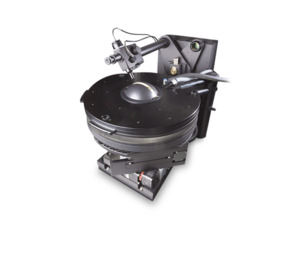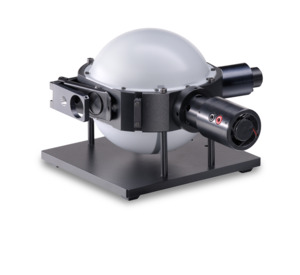Optical Probes EOP and TOP - Optimum accessories for the photometric quantities to be measured












EOP – Optical probes for irradiance measurements
Instrument Systems offers a series of EOPs for measuring irradiance and universal radiation coupling. These differ mainly in terms of light throughput, degree of cosine correction and spectral range. All EOP optical probes contain a diffusor for scattering incident light. Behind the diffusor is the entrance facet of the optical fiber, with which light is coupled into the spectrometer.
Applications
For general applications we recommend optical probes EOP 120 and EOP 121 (lateral fiber bundle connector), as these offer the best compromise between good cosine correction and good light throughput.
Good to very good cosine correction is needed to measure extended light sources, although this is always at the expense of light throughput. Optical probe EOP-146 is the right choice for this purpose.
Optical probe EOP 140 is only suitable for applications requiring high light throughput. Model EOP 542 is available for measurements with a fixed field-of-view (5.7°) and is primarily used for measuring direct sunlight.
Instrument Systems offers integrating sphere ISP 40 for optimum cosine correction with a wide spectral range. Due to the integrating effect of the sphere, the entire beam is captured regardless of its convergence or divergence and coupled via the fiber bundle with the spectrometer.
Product versions
TOP 300 – AR/VR/MR Optical Probe for radiance and luminance measurements
The TOP 300 AR/VR/MR optical probe mimics the human eye pupil when viewing single spots on XR displays. It is equipped with a viewfinder camera and should be combined with a high-end spectroradiometer from the CAS series.
Special features:
- Optimized lens design mimics the human eye with FOV of ±1.2°
- Compact design, robust and lightweight (e.g. for binocular set-up)
- Highest accuracy luminance and color measurement
- Integrated viewfinder camera with 5 MP
- Different pupil sizes and focus distances possible
- Fiber guide with integrated mode-mixing adapter

The TOP 300 optical probe is primarily used for quality tests of AR/VR/MR modules in the production line or development. It performs highest accuracy color and luminance single spot measurement within an AR/VR/MR headset.
The innovative mode mixer from Instrument Systems ensures stable transmission through the fiber and thus reproducible measurement values, even when the fiber is moved on a positioner or goniometer. The compact TOP 300 design is ideal for mounting on a positioner/robot.
TOP 200/150 – Telescopic optical probe for radiance and luminance measurements
The TOP 200 telescopic optical probe is based on Pritchard optics with an integral viewfinder camera.
Special features:
- Pritchard optics with an aperture mirror inclined at only 15 º delivers perfectly round and sharp image spots
- Flexible connection by optical fibers with patented mode mixer for reproducible readings and very low polarization sensitivity
- Six measurement spot sizes selectable via software
- Internal viewfinder camera with wide field of view
- Smallest measurement spot: 80 µm
- Optional illumination of the test object
The TOP 150 is a low-cost alternative with a single aperture.
Applications
The measured radiation density is coupled into the spectrometer by the TOP 200 via a multimode fiber. The patented mode mixer from Instrument Systems ensures uniform light transmission in the fiber and thus reproducible readings, even when the position of the fibers is changed.
The Pritchard principle enables the field of view to be observed during measurement and monitored for exact positioning. The image of the viewfinder camera is automatically imported by the SpecWin Pro software and saved with the readings.
Product versions
LED 4xx – Luminous intensity measurement adapters for LEDs
Instrument Systems has developed various measurement adapters for determining the averaged luminous intensity ILED-B [cd] of LEDs. These differ according to the usable spectral range (only visible or also UV), measurement geometry and planned application (in the lab or production).
Measurement adapters contain a diffusor that forms the sensitive detector surface of precisely 1 cm². Behind the diffusor is an optical fiber bundle, with the aid of which the light beam is coupled into the spectrometer. This design is characterized by high light throughput with sufficient homogeneity of the detector surface. The LED-4xx series of measurement adapters is thus particularly suitable for low-light LEDs and use in fast production tests.
Applications
LED 4xx measurement adapters can accept all test sockets of the LED 5xx, LED 6xx and LED 81x series. A clamping mechanism ensures reproducible and exact alignment of LEDs at all times. Shortened versions of the measurement adapters are available for use in production (e.g. for mounting on an LED handler).
For applications requiring the highest degree of precision, optical probe LED 25 was developed for determining “averaged LED intensity” according to CIE 127. The latter is based on an integrating sphere and thus offers homogeneous light sensitivity over the whole detector surface, albeit with a reduced light throughput.
Product versions
Further special accessories available. Please allow our specialists to advise you!














